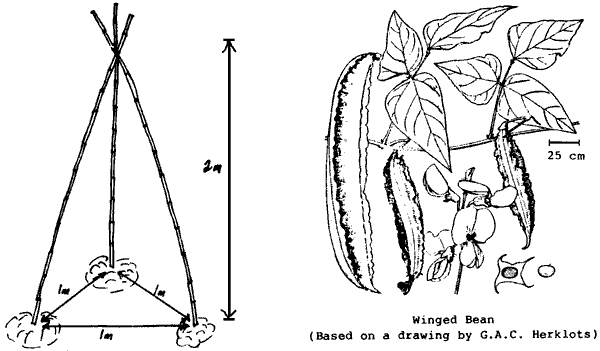
WINGED BEAN
SCIENTIFIC NAME: Psophocarpus tetragonolobus
FAMILY: Fabaceae
| NAME | WINGED BEAN |
| SCIENTIFIC NAME | Psophocarpus tetragonolobus |
| GROUP | Legume (Pea) |
| NATIVE AREA | South East Asia |
| EDIBLE PARTS | YOUNG BEANS - are cooked whole or cut. OLD BEANS - Older or more mature pods produce a small number of large peas that may be used as green peas. Dried pods contain dried peas that store well and may be reconstituted for cooking. YOUNG LEAVES AND FLOWERS - The plant produces large purple flowers that are very showy. These flowers and the young beans may be eaten raw or lightly steamed. ROOTS - The plant produces a storage root. This is often only 25 - 50 cm long and 10 - 20 cm in diameter but is a useful root vegetable raw or cooked. |
| TOXIC PROPERTIES | A slight bitterness may be detected in older peas though this will not cause any problems. |
| PROPAGATING | Winged beans may be propagated annually by seed or perennially by allowing the storage root to shoot after the winter die off of the vine. |
| GROWING | A stick TEE PEE or trellis fence is necessary to induce the vines to climb. Seeds are best planted in early spring as flowering is induced by the shorter day lengths after summer. Vines respond well to dressings of compost dug into the top soil and require regular watering. |
| HARVESTING | Continuous picking of the young pods induces the plant to continue growing and flowering. |
| PEST AND DISEASE | Grasshoppers and mites are pests that have occurred locally. |

Stick Teepee
plant 1 seed at base of each stick.
DATE: March 1986
* * * * * * * * * * * * *
